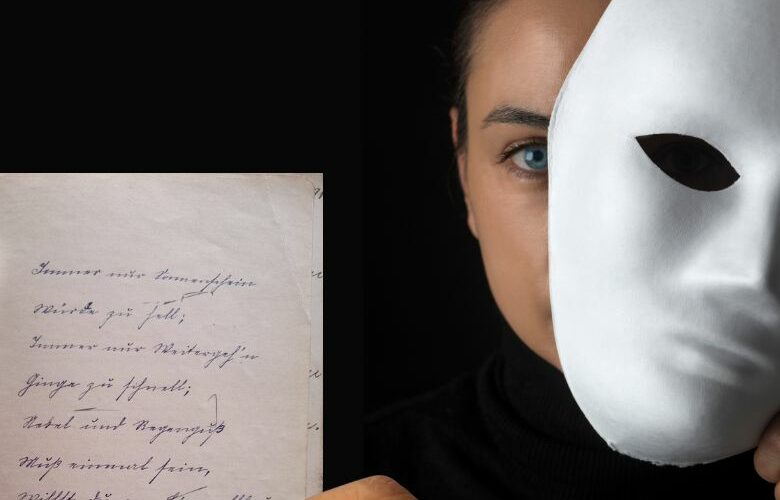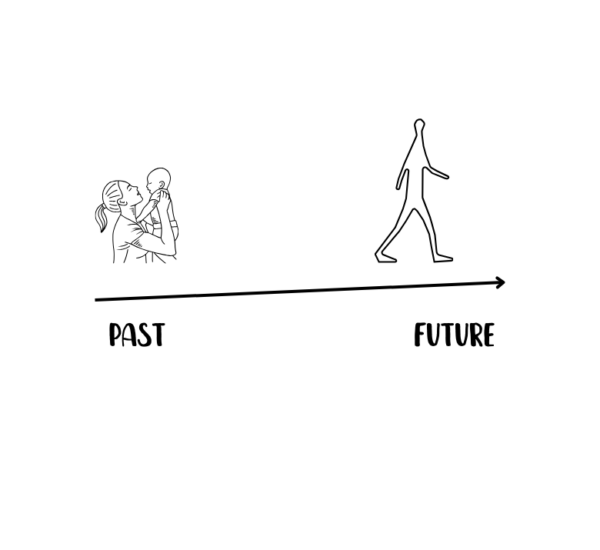Hello friends! In simple terms, defense mechanisms of the ego are strategies or reactions of our personality that we use to cope with difficult situations without realizing it. They activate in response to threats from the Id, the Superego, and the external environment. They work by distorting reality to varying degrees, making it more accessible, manageable, and acceptable to us. Defense mechanisms help maintain psychological balance in the face of anxiety or distress caused by certain situations. They act by filtering unconscious content that would be too disturbing if it came to consciousness.
These mechanisms are normal and natural in human mental activity and are present in everyone. However, they can become problematic if overused or applied too rigidly.
They are unconscious resources we use to find balance, avoid suffering, and eliminate from our consciousness painful experiences that we have not been able to process or understand, which hinder our healthy functioning.
The Professional Graphologist Must Know Defense Mechanisms
For a professional graphologist to conduct a complete and accurate analysis of personality, it is essential to understand ego defense mechanisms. These mechanisms are fundamental to understanding how people handle stress, anxiety, and conflict situations. Without this knowledge, we are limited to describing the graphical aspects of handwriting without truly delving into the deeper meaning of the writing.
Defense Mechanisms in Handwriting
What Happens When Defense Mechanisms Are Overused
Defense mechanisms are a normal part of our functioning, but in certain cases, they can become problematic. Inappropriate, very intense, or excessive use of these mechanisms can cause problems such as suppressing feelings, developing psychological and physical symptoms, affecting our identity, and increasing dependency on habits and fantasies. This can hinder our functioning and reduce honesty and intimacy in our relationships, without resolving the underlying conflict.
Graphology detects defensive mechanisms through the psychological types defined by Freud in the Oral, Anal, and Phallic stages. By analyzing handwriting, one can identify the predominant stage and, consequently, the defensive techniques being used. This analysis allows for a deeper and more accurate study of personality, contributing to a more complete and scientific graphological profile from a psychological perspective.
Defense Mechanisms by Anna Freud
Ego defense mechanisms were first proposed by Sigmund Freud (1925), but it was his daughter, Anna Freud (1973), who delved deeper into the topic and made the first systematic classification. Without these defense mechanisms, we would act solely on impulses. If these defenses did not activate when we feel basic emotions like fear or anger, it could cause mental imbalances.
Ego defense mechanisms act unconsciously and do not change reality but try to reduce the anxiety it causes us. We all use one or more of these mechanisms in different situations, although each person predominantly uses certain mechanisms, which characterizes their personality type.
They are classified as primary or secondary based on when they appear in our development. Primary defenses develop early in life and tend to deny reality. Secondary defenses develop later and usually maintain a sense of reality.
Regression in handwriting
Regression is the unconscious process by which an individual returns to immature, more childlike, and less demanding behavior patterns to evade conflict and find security. This involves reverting to behaviors that are presumed to have been overcome and processed, as they correspond to earlier developmental stages. For example, an adult who throws a tantrum like a child when something does not go as expected.
In Handwriting: To interpret, read HERE the Graphical Aspects.
- Order: Decreasing left margin, large right margin, delayed punctuation, concentrated writing.
- Size: Small writing with short downstrokes.
- Shape: Childish letters, inconsistent connections.
- Speed: Slow writing.
- Direction: Descending lines.
- Slant: Reversed.
- Pressure: Heavy.
- Continuity: Disconnected writing, inconsistent cohesion, regressive writing.
- Reflex Letters: Low crossbars on “t”.
- Signature: To the left, signature enclosed by a flourish.
Read also: How to analyze your signature
Repression
Repression involves preventing painful or dangerous thoughts and feelings, which generate anxiety, from entering consciousness. This mechanism activates when a desire conflicts with morality (the Superego). Instead of confronting these thoughts or memories, the mind pushes them into the unconscious. For example, the desire to harm another person. A thought is removed from consciousness due to its disturbing potential. An immoral thought that is set aside remains in the unconscious, generating symptoms. Everything repressed expresses itself through external symptoms, returning as fantasies, slips of the tongue, failures, relationship difficulties, breakups, etc. Repression involves a constant “mental energy expenditure” that weakens the personality.
- Order: Predominance of white space, decreasing left margin, concentrated writing.
- Shape: Threadlike writing, angular, presence of arcs.
- Slant: Moderately reversed.
- Continuity: Regressive writing.
- Reflex Letters: Split ovals.
- Signature: To the left.
Displacement
Displacement occurs when an emotion or impulse is redirected from its original object to another because expressing it directly would be too distressing. This mechanism allows emotions to be released in a less dangerous or socially acceptable direction. For example, someone frustrated with their boss might take out their frustration by yelling at a family member or hitting a pillow. In this case, it is a defense mechanism where the anger is displaced to another person or object.
- Size: Decreasing, displaced.
- Shape: Threadlike writing.
- Pressure: Heavy writing.
- Reflex Letters: Flattened ovals.
Reaction Formation
Reaction formation involves substituting an emotion or impulse with its opposite. It is behaving in an exaggeratedly opposite way to the original impulse. Those who greatly fear their aggressive emotions tend to use reaction formations to protect themselves from what might feel dangerously uncontrollable. For example, turning hate into love, stinginess into generosity, or extreme cleanliness into order.
- Size: Large writing.
- Shape: Calligraphic, curved writing.
- Slant: Reversed.
- Continuity: Regressive writing.
- Signature: Lack of coherence between signature and text.
Isolation
Isolation involves separating emotion and affect from painful thoughts or memories, expressing them without emotional charge. It is common in obsessive neurosis. An intolerable idea is separated from the emotions it produces, remaining in consciousness in a weakened form. For example, recounting a traumatic event like a death or accident with normality, as if it were insignificant. This “emotional anesthesia” can be useful in professions like surgery.
- Order/ layout Spaced writing.
- Size: Small, contained writing.
- Shape: Angular writing.
- Continuity: Letters close together, lapses in cohesion.
- Gestures: Loops.
- Reflex Letters: “s” closed at the bottom.
- Signature: To the left, separated from the text, small, enclosed by a flourish.
Undoing
Undoing involves performing a specific act to nullify or compensate for a painful emotion (usually guilt or shame) by using contradictory behaviors at successive moments. It is common in obsessive-compulsive disorders. The obsessive person often performs compulsive rituals to nullify the feared destructive effects. The second positive behavior tries to magically nullify the true feeling that appeared reflected in the first to “undo” it as if nothing had happened.
An individual who feels they are harming another person might try to compensate by treating them excessively well in a compulsive manner.
- Slant: Uneven writing.
- Pressure: Presence of retouches.
- Continuity: Regressive, uneven writing.
- Reflex Letters: Closed ovals, flattened ovals.
- Signature: Difference between signature and text.
Projection
Projection involves attributing to others (people or objects) what is actually one’s own. This mechanism tends to distort the perception of others. It is the process by which what is inside is interpreted as coming from outside and not recognized as one’s own. For example, one gets angry with their brother, but the Superego says that is unacceptable. The problem is resolved by thinking, “He is angry with me.”
- Order: Advanced points and accents.
- Size: Overraised writing.
- Direction: Rigid horizontal writing.
- Pressure: Variations in vertical and horizontal pressure.
- Reflex Letters: Descending crossbars on “t”, advanced crossbars, angular downstrokes.
Introjection
Introjection is the psychological process by which a person incorporates into their internal system beliefs, patterns, or qualities of others or the social context as if they were their own. From childhood, behavior patterns, norms, values, and prejudices transmitted by parents, institutions, and religions are incorporated from the external world. This is done unconsciously and forms the basis of the Superego. In its more problematic forms, it can result in identification with the aggressor. For example, we internalize ethical or moral norms that are indoctrinated into us. “In life, you have to get married and have children,” and without questioning it, these beliefs are taken as real, leaving aside one’s own desires and needs.
- Order: Concentrated writing, small left margin.
- Size: Small writing.
- Shape: Rounded, garlanded writing.
- Slant: Inclined.
- Pressure: Light.
- Reflex Letters: Open ovals.
Turning Against Oneself
This defense mechanism involves directing negative emotions, impulses, or thoughts towards oneself instead of others. This can manifest as excessive self-criticism, self-harm, self-loathing, or even self-destructive behavior. It is a way to manage internal distress or guilt by internalizing it and directing it towards oneself rather than expressing it outwardly towards others or objects. Instead of hitting someone else, the person hits themselves or an object.
- Shape: Angular writing.
- Gesture: Hooks, regressive endings.
- Reflex Letters: Regressive, pointed crossbars on “t”, punctured ovals.
Denial
To defend or protect oneself from an unpleasant reality despite its evidence, one denies or rejects it. Denial involves refusing to accept that something is happening, based on the belief, “If I don’t acknowledge it, it doesn’t happen.” Freud stated that what is denied is affirmed. “It’s not that I didn’t want to come, it just got late.” If told they have few days to live, the reaction would be, “It can’t be; there must be a mistake in the results.” Its roots lie in the early egocentric stages of development where everything that is, and is not, revolves around oneself.
- Order: Increasing left margin, lack of punctuation, predominance of white space over text.
- Size: Low writing.
- Shape: Arched, threadlike writing.
- Pressure: Firm.
- Gesture: Regressive and short endings.
- Reflex Letters: High crossbars on “t”, closed ovals with loops.
- Signature: Illegible.
Rationalization
Rationalization involves unconsciously creating reasons to justify or cover the true reason for a behavior or act that would be experienced as conflicting. For example, a person’s child commits a crime of fraud, and the father justifies it by saying, “His partner led him astray; from the start, I knew that man was not good for him.” He cannot accept his child’s responsibility. This defense allows one to accept the situation with less resentment.
- Order: Clear writing.
- Size: Overraised, tall writing.
- Shape: Threadlike, simplified writing.
- Pressure: Firm.
Sublimation
Sublimation involves finding a satisfying way to channel impulses that cannot be expressed socially into constructive, creative activities. It allows the release of the impulse, displaced and transformed, instead of struggling against it. Aggressiveness can be sublimated by practicing or watching sports like boxing.
- Order: Proportioned, good graphic space management.
- Size: Small, tall writing.
- Shape: Simplified, sober, original.
- Speed: Steady writing.
- Direction: Ascending writing.
- Pressure: Light.
- Continuity: Evolved, progressive writing.
- Gesture: Ascending endings.
- Signature: Well-formed, minimal flourish.





